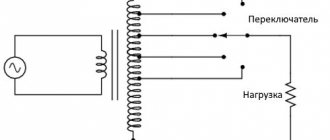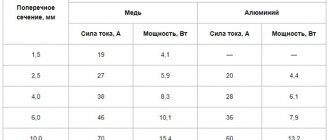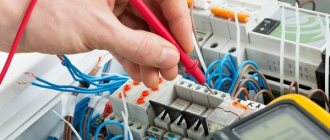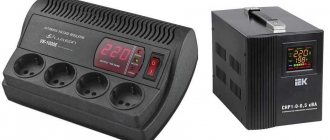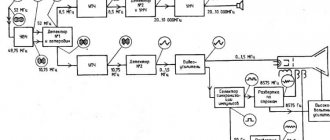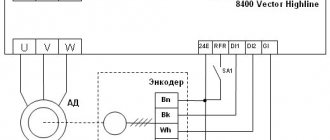Having purchased new household appliances, every user expects its long and uninterrupted operation. But the danger lies not only in manufacturing defects or weak points of the device itself, but also in the electrical network, in which fluctuations are often observed. A voltage stabilizer will save the washing machine from premature failure.
- Why do you need a stabilizer for SMA?
- Types of voltage stabilizers
- How to choose the right one
- Required power for washing machine
- Popular models
- Consumer Reviews
- Catalog of washing machines with characteristics
Why do you need a stabilizer for SMA?
Modern home appliances are characterized by increased sensitivity to power surges in the network. If we talk about a washing machine, then various fluctuations lead to electronic failure, instability of the drain pump, an increase in the duration of the washing cycle of the device, and even problems with unlocking the hatch.
Types of stabilizers
Operating the device during a voltage drop is no less dangerous than at high values. In this case, the engine overheats and may burn out. The control module may also fail.
Expert opinion
I work in the household appliance repair industry. Extensive experience in restoring washing machines and dishwashers.
Ask a Question
To make sure you need to purchase a stabilizer, take simple measurements. You will need a regular 220 V tester.
Measure the voltage in the network 3-4 times a day for 5 days, preferably in the morning and evening - during active use of household appliances, when the residents of the house consume maximum energy. This will allow you to get a certain understanding of the fluctuations that occur and draw the following conclusions:
- If the readings were in the range of 205-235 V, it is not necessary to purchase a stabilizer.
- In case of deviations from the norm - 10% less (198 V) or 7% more (242 V) - it is recommended to install a stabilizer.
- Voltage surges in the range of 187-242 V can be called critical. In this situation, your equipment immediately requires additional protection.
Choice
Cases of breakdowns of complex household appliances due to poor quality household power supply are not uncommon today.
Breakdowns of washing machines and other household appliances due to changes in the supply voltage in the network are not considered service cases, so the owners carry out repairs to the SBT at their own expense. Taking this into account, you should take readings of the mains voltage in a private house or apartment. It is better to take measurements 5–6 times a day during peak loads during the day and, after turning off most consumers, at night.
If the values fall outside the range of 180–242 V, you will need to stabilize the voltage by selecting the correct electrical appliance. Voltage equalizers for washing machines, called stabilizers, differ in design. They come in relay type, ferroresonant type, step type and servo type.
Each 220 V version differs in operating principle and technical characteristics. As product items, they have different consumer properties and occupy their own price niche in the segment of electrical products.
Relay
Represents an autotransformer with several taps from the winding, a power relay and a control board. First, the input voltage is measured and, depending on its value, the control board sends a voltage boost control signal to the corresponding relay. The relay contacts connect certain groups of turns of the secondary winding. Relay stabilizers allow you to obtain an undistorted sinusoidal current, most suitable for the operation of an electric motor. Stabilizes input voltage 220 ± 15 V with an error of 5–8%.
Ferroresonant
The disadvantage of this type is considered to be high noise and the dependence of the quality of stabilization on the size of the connected load. Today they are mainly used to power electrical receivers in industry.
Stepped
Step stabilizers are voltage equalizers with electronic switching of autotransformer windings. They are similar in principle to relay ones, only the taps of the autotransformer are connected using thyristors and triacs. The absence of parts with mechanical wear made it possible to extend the service life of the step stabilizer compared to its relay analogue. Protection in the latest modifications is carried out with stabilization accuracy 220V+2V/-3V.
Electromechanical (servo-drive)
The electromechanical device uses an autotransformer with a sliding contact, the movement of which along the winding is carried out by a servo drive. Regulation is carried out using a simple control board. The advantage of electromechanical voltage equalizers is the acceptable voltage accuracy at the output terminals. Servo-drive devices are capable of providing protection for electrical receivers in the range of 6–7%.
Types of voltage stabilizers
Are you unplugging your washing machine?
Oh yes! No
Relay
The most common and affordable are relay stabilizers. These models provide a large range for the input voltage, but some problems arise with the accuracy of maintaining the output voltage.
During operation of the device, the relay contacts gradually burn out, which leads to its malfunction. Therefore, the relay stabilizer should be replaced after a certain time so as not to put your household appliances at risk.
Stepped
More complex are stepped stabilizers, equipped with a system of semiconductors that gradually correct distortions. These models are not responsive, but are more reliable and durable. Step devices are well suited for protecting automatic washing machines from power fluctuations.
Servo drives
Electromechanical stabilizing devices or so-called servos are limited to a small operating range. In addition, the servomotor may wear out, which is not easy to repair due to the lack of components.
Expert opinion
I work in the household appliance repair industry. Extensive experience in restoring washing machines and dishwashers.
Ask a Question
The advantage of these stabilizers is considered to be good accuracy of the output voltage. The devices show their effectiveness when the indicator deviates from the norm by 5-7%.
Electronic
Modern stabilizers are equipped with an electronic control circuit, which ensures a quick response to changes in the power supply. The absolute accuracy of the devices and a large operating range will help protect the machine during any voltage fluctuations.
ERA SNPT-5000-C
Another relay floor stabilizer, with which you can adjust the voltage supply to the washing machine on a 220V network. This is a single-phase device with a surge accuracy of up to 8% in 20 ms. To monitor the potential, a digital voltmeter display is displayed on the front panel. The characteristics are as follows:
- input voltage – 140-260V;
- output voltage – 202-238V;
- Efficiency – 95%;
- frequency – 50-60 Hz;
- total power – 5 kV A.
To operate ERA SNPT-5000-C, you need a temperature range of 5-40 degrees and humidity up to 85%. The provided protection class is IP20, and safety is also ensured by emergency operation for short circuit, overheating, network overload and interference. The owner of the machine will also be pleased with the start delay, which will allow stopping the operation of the washing machine as carefully as possible for the electronics. In terms of size, the ERA is quite compact: 22 cm wide, 25.6 cm wide and 35.2 cm deep. The device weighs 9.5 kg.
How to choose the right one
Of course, it is wise to take care of the safety of all household appliances in the house. For this you need a stabilizer of appropriate power. This indicator is the main one when choosing a device.
Stabilizer graph
To find out the required power:
- Determine the total number of devices connected to the network.
- Find information about the power consumption of each device in the instructions and add up the figures.
- Add 20-25% to the resulting value.
Expert opinion
I work in the household appliance repair industry. Extensive experience in restoring washing machines and dishwashers.
Ask a Question
This number will be the required power, which you need to focus on when purchasing a stabilizer in order to ensure uninterrupted operation of the home appliance system.
It is also worth considering such a parameter as the number of phases, depending on the type of electrical network directly in your home. This information can be found on the meter. Single-phase networks are most common.
But there are exceptions for which you will need to buy a three-phase stabilizer. Installing an automatic residual current device (RCD) will increase the level of security in the system.
Security questions
Checking safety recommendations is a mandatory requirement before starting work.
The following nuances will help protect yourself:
- Heating devices are not suitable for extension cords.
- You should not connect one extension cord to another.
- Use indoors where there is a constantly high level of humidity is not allowed.
- 3.5 W is the maximum permissible power for the device.
- Surge protectors should only be connected to outlets that have a separate ground.
- It is prohibited to use networks with a power of 380 V.
Required power for washing machine
If you decide to purchase a stabilizer only for the washing machine, find its power consumption in the user manual. In this case, the main volume falls on the heating element and the engine. At the stage of reaching the required temperature, the heater requires more energy, as does the electric motor during startup - up to three times higher than the nominal value.
voltage stabilizer power table for SMA
When choosing a device, take into account the increase in the rated power written on the sticker at start by 20%. By taking measurements of fluctuations in the electrical network, you will find the maximum deviation.
It must be multiplied by such a general indicator as the power adjustment factor. A table with this data can be found on websites with relevant topics.
For example, you observed a jump in the network to 160 V. In the table, this value corresponds to the following coefficient - 1.38. To protect a washing machine with a rated power of 2 kW, you need to make the following calculation: 2 x 1.38 = 2.76.
Next, you need to take into account the start-up increase (20%): 2.76 x 1.2 = 3.31 kW. The resulting number is the required power of the stabilizer, which can protect the washing machine from surges in the network.
Will a surge protector do the job?
The basic means of protecting any equipment powered by electricity is a surge protector. This element is built into the factory when assembling the washing machine, directly into the body of the unit. If there is a serious jump, the filter may become unusable, but it will protect other, more expensive parts of the machine from damage. The principle of operation of the surge filter is simple: it passes through only vibrations with a frequency of 50 GHz, more frequent or rare waves are blocked by the element.
Another function of the surge filter is to retain and transmit to grounding the reverse current waves created during the operation of an asynchronous electric motor. Thanks to this procedure, other components of the washing machine are relatively reliably protected from electric shock. If there were no power filter in the washing machine, then many parts would very often be subject to “attack by electrical waves.” We are talking about the following elements:
- heater;
- asynchronous engine;
- main control module;
- equipment control panels.
The filter element protects components not only from high vibrations of the electrical system, but also from low ones. If a part malfunctions, the operation of the washing machine is often completely blocked. Using a washing machine with a faulty surge protector is unsafe and incorrect.
Popular models
Voltron PCH-3000
Among the popular models of stabilizers, it is worth noting the Voltron PCH-3000, which has won the trust of customers. This safe and economical voltage regulator, combining the functions of a relay and a step device, can be used in a country house. It is capable of ensuring trouble-free operation of several powerful household appliances.
Voltron PCH-3000
The device produces . The quality of our products meets international standards. The advantages of the model include:
- metal case;
- adjustable turn-on delay;
- digital display;
- Bypass mode;
- several levels of protection;
- high speed of response.
UPower ACH-3000
UPower ACH-3000
This voltage regulator has two types of protection (relay and step), preventing:
- short circuit;
- overload;
- overheat.
A device weighing 7 kg is installed on the floor in a room where the humidity level does not exceed 98%. Suitable for rooms without heating, designed for a temperature range from -30 to +40 °C.
The relay operation is controlled by the processor. The device responds to the drop within 4 ms.
Energy ASN-5000
Energy ASN-5000
The stabilizer is a relay type device. This model is considered one of the most economical. The device is equipped with two digital displays, indicators and keys for comfortable use.
The operating range is 120-280 V. When the voltage is higher than normal, the device turns off. The efficiency of the device is 98% at a power of 5 kW.
Voltage stabilizers neutralize the negative impact of fluctuations in the electrical network on household appliances. Functional and reliable devices operate almost silently, but cope with a large number of tasks. By purchasing a regulator for your washing machine, you will provide it with long-lasting protection from power surges, and, therefore, extend the life of uninterrupted operation of your home appliances.
Hazardous factors of the electrical network
Stabilizers for washing machines must be used taking into account certain features:
- the network can maintain high voltage for a long time, accidents and phase imbalances occur;
- sometimes the network is overloaded and experiences low voltage levels;
- Sometimes high voltage levels occur for a short time. This factor is associated with neutral malfunctions;
- sudden changes occur temporarily, the range of which is 120 - 300 V. They are caused by connecting welding machines and other powerful devices;
- thunderstorms during which there is no working lightning protection at the facilities.
Consumer Reviews
Advantages: Lightweight, compact. Two displays show voltage and current (as a result, it is easy to calculate the load). The voltage on the display matches the voltage in the sockets (this is the main advantage from a well-known Latvian brand ;)) Disadvantages: Connection block - the screw presses the plate, I had to solder the terminal for better contact (nit-picking - the issue price is 20 rubles). A small hand, my not thick hand somehow got in, it’s inconvenient when you put it in a niche under the ceiling (nitpicking). I didn’t drop anything, didn’t freeze, but some of the LEDs on the scoreboard don’t work (the numbers don’t have enough crossbars), but essentially everything is clear. Comment: I placed two stubs on different lines. One is Latvian-Chinese, the other is this one. At the moment, ASN Energy evokes great sympathy, it is informative and honest. On the other hand, both work the same. There is one type of LED lamps that sometimes blink, but there is a reasoned answer below.
Single-phase voltage stabilizer ACH 5000George
Advantages: 1) Able to work in a cold room. 2) I welded through it at 150-160 volts on the line - they resorted to the fact that the refrigerator burned out))) Answer - “All questions are for electricians, but I cook through a meter and stabilizer” Disadvantages: 1) The light has time to blink during switching 2) Its clicking whatever you want Comment: If you have someone cooking on your line, you can have a disco, the lights are already blinking, and the stabilizer produces a powerful beat. Because of his clicking, he had to be sent to a room without heating so as not to interfere with sleep.
Single-phase voltage stabilizer ASN-10000 (8 kW) Vitaly
I bought Voltron 3000 specifically for the DAB ESybox mini pumping station, because... In our village in winter, 170 Volts are not uncommon, and it was a pity to ruin an expensive station. I bought it, installed it, everything works. But there are nuances: 1) It shows the output voltage 219V, but in fact the measurements are 211V, but that’s okay. 2) With an input voltage of 180-190V, the relay always clicks, at which, not always, but quite often, the “voltage” error signal lights up at the pumping station. Those. when switching the relay, the voltage disappears for too long an interval of time, or during this switching the voltage characteristics are such that the station protection is triggered. Formally, the stabilizer works and I cannot hand over it, but in fact it was not suitable for my specific task. Maybe the station is too demanding on network parameters, I don’t know, but the fact remains.
Voltron PCH-3000Evgeniy
Pros: Works quietly. It simultaneously shows the input and output voltage. Disadvantages: It does not smooth out voltage surges, but rather the opposite. I bought it for a village where power surges are common, there is no point in running lighting through it. The light flashes so much more. True, a single-phase compressor and other electric motors with it start much better, when the stabilizer starts switching windings, the engine speed jumps noticeably. Overall, I'm not happy. Comment: Suitable only for use in a garage for working with electric motors. Not suitable for lighting and electronic equipment, including washing machines.
Single-phase voltage stabilizer Upower ASN-10000 (8 kW) Elena
Advantages: I purchased it for what it was intended for, namely for a summer residence, powering an irrigation system consisting of two centrifugal pumps. The mains voltage is often 139 volts. Suitable even for a welding inverter. Disadvantages: Inconvenient carrying handle, but this is nitpicking. Comment: The first preliminary pump, Parma 750 drainage pump, supplies water from the reservoir to the main one, increasing the pressure Speroni RSM-5. Previously, without a stabilizer, the Speroni RSM-5 (1400 watt) pump got very hot, and after a few minutes of operation it turned off due to the activation of a thermal protection relay. The network drawdown was 140 volts, this is extremely low, and the pump would simply burn out if not for the protection. With the stabilizer this problem disappeared, but the laws of physics are not canceled, and at a voltage of 140-150 volts the stabilizer does not pull two pumps with a total power of 2150 watts, the protection is triggered, but one Speroni pulls easily even with such drawdowns, and it does not heat up. I can’t imagine how I managed without a stabilizer before, this is a necessary thing in such cases.
Single-phase voltage stabilizer Energy ACH 5000Oleg
Previous
Next
